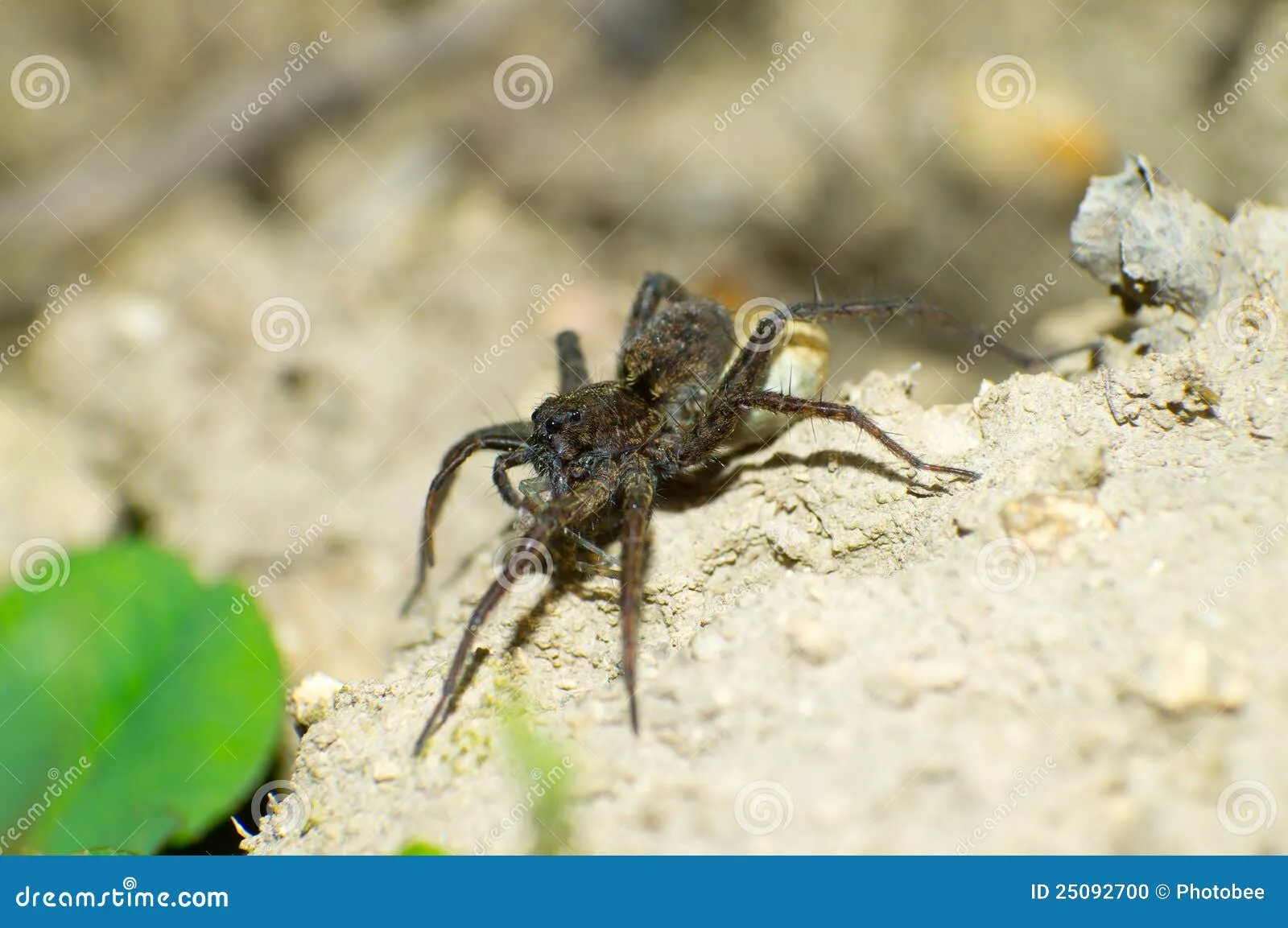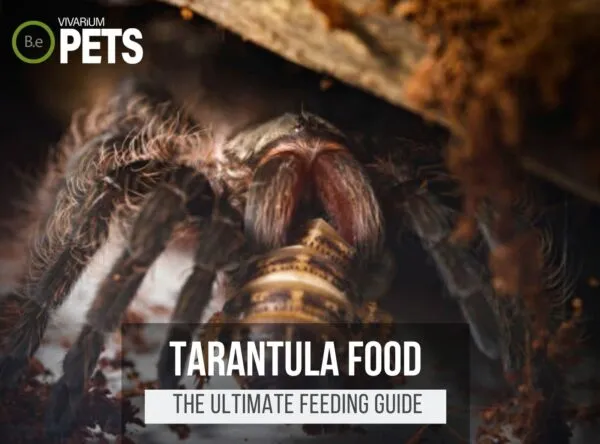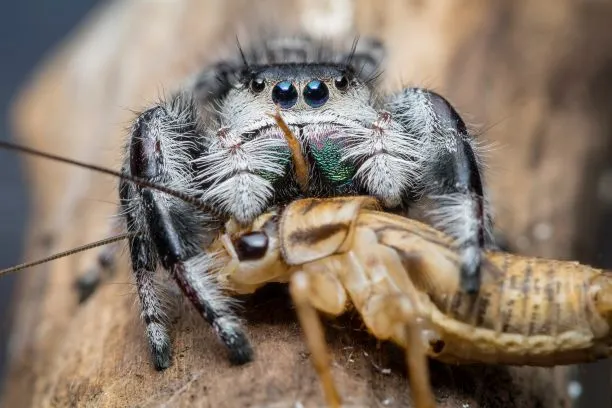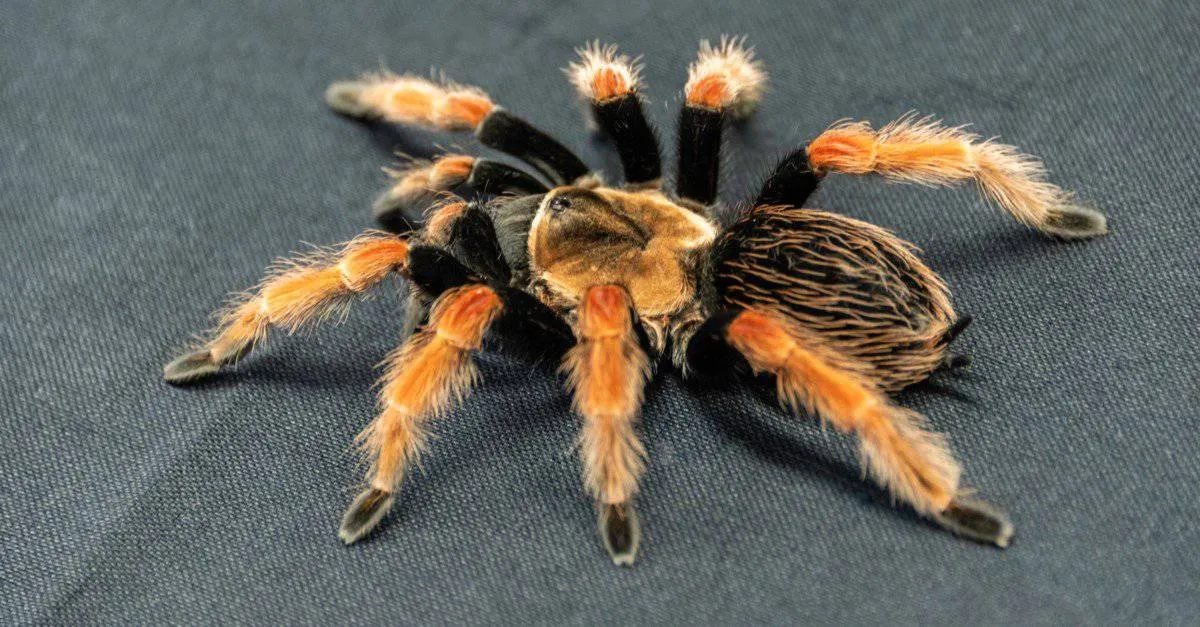What Do Tarantulas Eat An Overview
Tarantulas, fascinating creatures that they are, are obligate carnivores, meaning their diet consists solely of meat. Understanding what tarantulas eat is crucial for their health and well-being in captivity. Their natural feeding habits vary depending on their species and habitat, but in general, they are opportunistic predators that will consume a variety of prey items. Knowing the right foods to feed your tarantula is essential for providing a balanced diet that ensures they thrive. This guide will explore the various food sources suitable for tarantulas, the factors affecting their feeding frequency, and how to avoid common dietary mistakes. By understanding these aspects, you can provide your tarantula with the best possible care and ensure a long, healthy life.
The Basic Tarantula Diet
The cornerstone of a tarantula’s diet revolves around easily obtainable and digestible protein sources. In the wild, tarantulas will eat whatever they can catch and overpower. In captivity, you will need to provide a diet that is appropriate and accessible. The following sections will delve deeper into the most common and nutritious food options for your pet tarantula, focusing on the types of prey that best meet their dietary needs and ensuring they remain healthy and thriving. The aim is to offer a balanced, and easy-to-manage diet to keep your tarantula at its best.
Insects

Insects form the primary food source for most tarantulas. They are readily available, relatively easy to manage, and provide essential nutrients. The specific types of insects you choose can vary, but it is important to offer a variety to ensure a balanced diet. The size of the insects should also be considered, ensuring they are appropriate for the size of your tarantula. It’s important to avoid wild-caught insects due to the potential risks of parasites or pesticides. Instead, focus on raising your own feeders or sourcing them from a reputable supplier. The following insects are very good food for your tarantula.
Crickets
Crickets are a popular choice due to their availability and ease of handling. They are a good source of protein and are often readily accepted by tarantulas. Ensure the crickets are gut-loaded with nutritious food before feeding them to your tarantula to maximize the nutritional value passed on to your pet. Gut-loading involves feeding the crickets a diet rich in vitamins and minerals, such as fresh vegetables and commercial cricket food. Crickets are a versatile option, but their high chitin content, which is hard to digest, means they should not be the sole food source. They are best provided as a part of a mixed diet.
Roaches
Roaches, such as Dubia roaches, are highly nutritious and offer a good protein-to-chitin ratio, making them a better option than crickets in some aspects. They are also less prone to escaping and can be easier to keep in a feeding colony. Roaches are a good source of protein and have less hard-to-digest chitin than crickets. They are also relatively slow-moving, making them easier for tarantulas to catch and consume. Similar to crickets, the roaches should be gut-loaded prior to feeding to boost their nutritional value. Roaches are a good option as they are also less likely to burrow in the substrate, potentially causing issues within the enclosure.
Mealworms

Mealworms, while readily available and easy to store, are less nutritious than crickets and roaches. They have a high chitin content and are not the best primary food source. However, they can be offered occasionally as part of a varied diet. It is important to note that mealworms can burrow, which can be a concern in some habitats. Mealworms provide some variety and are often easy for smaller tarantulas or slings to handle. However, their lower nutritional value means they should be offered only as a supplement, not the main food source. This keeps your tarantula at its best.
Other insects
Other insects such as superworms, waxworms (in moderation due to high fat content), and various other feeder insects can also be included in a tarantula’s diet. The key is to offer a variety to ensure your tarantula receives a broad spectrum of nutrients. Superworms are a good option, but they should be fed in moderation as they also have a higher fat content. Waxworms are high in fat and should be offered very sparingly, if at all, as they can lead to obesity. Variety is crucial in providing a balanced diet and maintaining your tarantula’s overall health.
Small Vertebrates
Small vertebrates can be offered as an occasional treat for larger tarantulas. These can provide additional nutrients, but should not be a staple of their diet due to the higher fat content and potential digestive issues. The occasional offering of vertebrates mimics a tarantula’s natural diet and provides a change of pace. Ensure the vertebrates are appropriately sized and that you feed them to your tarantula sparingly. The following types of vertebrates are commonly used.
Pinkie Mice

Pinkie mice, or baby mice, can be given to larger tarantulas as a treat. They are rich in protein and offer a good source of nutrients. However, pinkie mice should be offered infrequently to avoid overfeeding and obesity. Overfeeding can lead to a shorter lifespan and health issues. The size of the pinkie should match the tarantula’s size to ensure it can be consumed effectively. It is crucial to remove any uneaten parts promptly to avoid attracting pests or causing hygiene problems within the enclosure.
Small Lizards
Small lizards can be offered as a treat. Similar to pinkie mice, lizards are a good source of nutrients, but should be offered sparingly due to their high fat content. When feeding lizards, ensure they are free from parasites and pesticides. Only offer lizards to larger tarantulas that can effectively handle and consume them. It is essential to monitor your tarantula’s weight and overall health when feeding lizards to ensure they maintain an appropriate body condition. They must also be free of any chemicals.
Other Food Sources
In addition to insects and small vertebrates, there are other food sources you can consider. However, these should be used sparingly and with caution. Pre-killed prey is a convenient option, especially for tarantulas that may be picky eaters or are not efficient hunters. When using pre-killed prey, ensure it is fresh and has been stored properly to avoid contamination. Always remove any uneaten portions promptly to prevent potential issues. Consider the nutritional profile and potential health risks. Pre-killed prey can be useful, but live prey offers natural exercise for your tarantula.
Tarantula Feeding Frequency

The frequency of feeding your tarantula depends on several factors, including its age, size, and the species. Spiderlings, or young tarantulas, typically need to be fed more frequently than adults. Overfeeding can lead to health issues, while underfeeding can stunt growth. Observe your tarantula’s behavior and body condition to adjust its feeding schedule. The goal is to provide a diet that supports healthy growth and development without causing unnecessary stress or health problems. Feeding habits depend on many factors.
Factors Influencing Feeding
Several factors affect how often you should feed your tarantula. Understanding these factors allows you to tailor the feeding schedule to best suit your pet’s needs. Being aware of these different factors will improve the tarantula’s overall health.
Temperature
Temperature plays a significant role in a tarantula’s metabolism. Higher temperatures typically increase their metabolism, leading to a greater appetite and need for food. When temperatures are higher, you might need to feed more frequently. However, it’s essential to maintain an appropriate temperature range for your specific tarantula species to prevent stress or health complications. Always monitor the temperature of the enclosure and adjust the feeding schedule accordingly. Higher temperatures increase the need for food.
Size and Age

Spiderlings and juvenile tarantulas require more frequent feeding than adults. Spiderlings are growing rapidly and need a consistent supply of food to support their development. As they grow, the feeding frequency can be decreased. Adult tarantulas, on the other hand, can often go weeks or even months between feedings. Adjust the feeding frequency based on your tarantula’s size and age. Spiderlings require more food compared to adults.
Molting Cycle
Tarantulas typically stop eating a few weeks before they molt. This is a natural process, and it is best not to force feed your tarantula during this time. After molting, they will often have a ravenous appetite and need to be fed. Provide adequate food after the molt to replenish their energy and support their recovery. The molting cycle influences your feeding schedule. Do not offer food to a tarantula that is about to molt.
Nutritional Needs
Providing a balanced diet is essential for your tarantula’s health, growth, and overall well-being. Tarantulas require a diet rich in protein, along with other essential nutrients. Understanding their nutritional needs allows you to make informed choices about the food you provide. Meeting the nutritional needs of your tarantula is crucial for its long-term health.
Essential Nutrients

Protein is the most critical nutrient for tarantulas, as it supports growth, muscle development, and overall body functions. The protein content in their food should be relatively high, and the quality of protein is also important. In addition to protein, tarantulas also need other nutrients, including fats and vitamins. A well-balanced diet should supply all these components. Consider feeding a varied diet to make sure all these nutrients are in place.
Water Requirements
In addition to food, tarantulas need a constant supply of fresh water. Water is essential for hydration and helps with the molting process. Provide a shallow water dish in the enclosure, and make sure it is always clean and filled with fresh water. The water dish should be sized appropriately to minimize the risk of drowning and should be easily accessible. Providing fresh water is as important as providing food.
Avoiding Common Diet Mistakes
Avoiding common dietary mistakes is crucial to ensuring your tarantula’s health and longevity. Overfeeding and providing inappropriate food can lead to serious health problems. Being aware of these pitfalls helps you provide the best possible care for your pet. Be sure to consider the following points.
Overfeeding
Overfeeding is a common mistake that can lead to obesity and other health issues. Adult tarantulas do not need to be fed frequently. Overfeeding can also cause your tarantula to be stressed and lethargic. It is better to feed them less frequently than to overfeed them. Monitor your tarantula’s abdomen, it should be a healthy size. If it is excessively large, reduce the feeding frequency. Too much food is never a good thing.
Feeding Insects That Are Too Large
Feeding insects that are too large can be dangerous for your tarantula. Large prey can injure your pet or cause them to refuse to eat. Always choose prey that is appropriately sized, ensuring it is no larger than the tarantula’s body. If the prey is too large, the tarantula may struggle to consume it, leading to stress and potential injury. Select food sources that can be consumed with ease and that do not present a hazard. The right food size will keep your tarantula healthy and well fed.
Conclusion
Understanding what tarantulas eat is essential to providing them with proper care and ensuring they remain healthy and thriving. The diet should primarily consist of insects, with occasional treats of small vertebrates. The frequency of feeding depends on factors such as age, size, and temperature. By following these guidelines and avoiding common mistakes, you can provide a balanced diet that helps your tarantula live a long, healthy life. Careful attention to the diet will bring the best health possible for your tarantula. Proper care includes the right diet.
